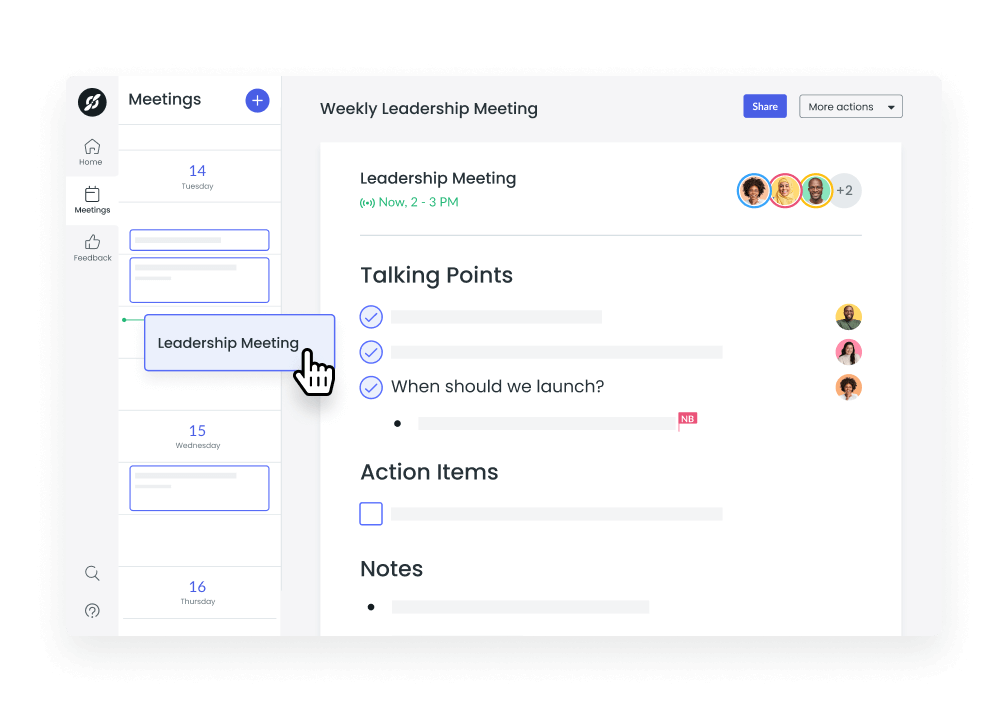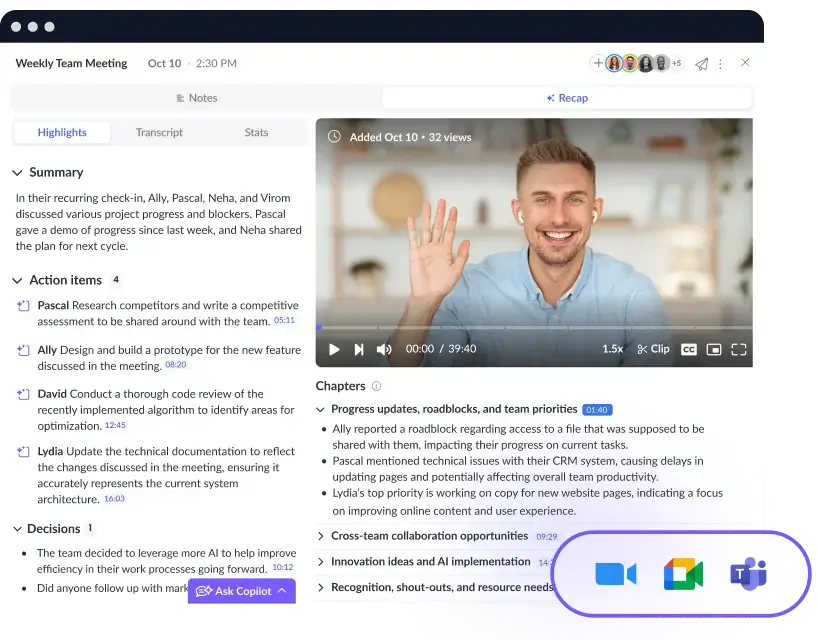The Future of Leadership in Engineering: What it Looks Like and Its Importance
Learn how to become a top-notch engineering leader and build a future-proof engineering team, plus tips for increasing diversity recruiting.
If you’re trying to move into an engineering leadership role, it can take more than technical expertise. Great leaders need soft skills and a strong commitment to equity in the workplace. Read on to find out how you can support the future of leadership, build a strong engineering team, and improve your own management skills.
- How to be a successful leader in engineering
- 6 ways to build a future-proof engineering team
- Three best practices for recruiting engineers
- Tips for increasing diversity recruiting
How to be a successful leader in engineering
To prepare team members for leadership, you first need to become an expert yourself. Here are some tips that can help you thrive as a leader.
Listen actively to solve problems
As a leader, it can be tempting to take the bull by the horns when you’re solving problems. It’s important, though, to strike a balance between being decisive and being open to suggestions. You should always keep an open mind to unexpected solutions while still making timely decisions.

Managing a team?
Take control of your team meetings by having collaborative meeting notes and encouraging accountability with action items. Try a tool like Fellow!

Be an open book
Transparency and effective communication go hand-in-hand. You should always be crystal clear about your team expectations, and you should regularly share updates.
Trust your team
Your team works best when they know you trust them. This starts with encouraging team building and a positive work environment, and it’s a great move to make. The more you can minimize micromanagement, the more you can maximize your team’s productivity.
Recognize everyone’s wins
Everyone who works hard deserves their time in the sun. Take time to praise any team members’ actions that help the whole team. This includes praising their work on even their most tedious tasks.
6 ways to build a future-proof engineering team
If you’re ready to put together an engineering team for the long term, there are a few big ideas to keep in mind. Here’s what to consider.
- Promote a culture of inclusion
- Make room for team members to give feedback
- Future-proof the hiring process
- Offer growth and development opportunities
- Build growing leaders’ soft skills
- Balance experienced engineers and growing leaders
1Promote a culture of inclusion
You should create a work environment where your top talent can bring their whole selves into the workplace. For example, your organization’s branding should show your commitment to diversity, equity, and inclusion. Being clear that your organization welcomes all ages, backgrounds, and identities can make the right impression on both employees and customers.
It’s also important to prioritize gender-inclusive language in everything you do. Something as simple as including pronouns in email signatures can go a long way toward helping your team members feel welcome. Setting up zero-tolerance policies against discrimination can also show that your organization cares about accountability.
2Make room for team members to give feedback
Growing your inclusive work environment takes more than bringing in diverse new talent. It also means making sure your workplace is a safe space for everyone to express their needs. This can start with making time for stay interviews with your team members.
As Melinda Briana Epler, Founder of Change Catalyst, explains, “Diversity is bringing humans with different backgrounds to the table. Inclusion is inviting them to speak at that table. It’s also supporting, encouraging, and making space for them to lead. Equity is correcting justice and fairness while addressing historical privilege and oppression.”
3Future-proof the hiring process
To build a team that lasts, you should hire with a future-minded approach. You should focus on hiring engineers that bring a variety of skills to the table. If you’re hiring your first employee, make sure to ask job candidates to share examples of successful collaborations. You should also keep an eye out for strong communication skills. A great way to do this is to ask interview questions that require clear communication to answer well.
4Offer growth and development opportunities
Supporting your team’s professional development is a strong way to boost employee engagement and keep team members from leaving your organization. If you’re managing team members who are interested in leadership, take the time to create training plans for them. For your team members who want to stay where they are, there can still be plenty of learning opportunities within their roles.
5Build growing leaders’ soft skills
Soft skills are key for growing future leaders, and you can offer experiences that teach these skills. To start, hold one-on-one meetings to ask your rising stars what they want to grow toward and what opportunities they see to get there. Is there an exciting project on the horizon? Are there training opportunities in areas where they want to improve? Keep a long-term vision in mind as you develop your future leaders.
You should also set clear goals and keep your communication channels open so that you and your future leaders can regularly share updates. This is a great way to guide them – no matter how brilliant your future leader team member is, they can’t do it alone. You can even line up mentor meetings, whether you’re mentoring your team or linking them with other experts.
6Balance experienced engineers and growing leaders
Team members of all experience levels can always learn from each other, so you should keep an open dialogue between your senior and junior engineers. For starters, your team members new to the field can learn a ton from their more experienced peers. The younger generation might also have insights that are totally new for more experienced team members. Clear communication among all team members is a great way to break down silos.
Three best practices for recruiting engineers
Here are some tips to make your hiring process the best it can be.
1Stay transparent
Everyone appreciates honesty, so let all potential team members know what to expect from your interview process. Tell them who they’ll be interviewing with, whether any technical tests are required, and what the hiring timeline might look like.
2Focus on more than your organization
While you’re hiring, you should look at more than how potential new hires can benefit your organization. You should also explain how you’ll help with their career growth and go over development opportunities. Showing that you care about your team members outside your own goals can go a long way toward connecting with future leaders.
3Keep questions focused on the job
It can be tempting to ask for everything but the kitchen sink when testing a job candidate’s technical knowledge. You should avoid that – it’s an easy way for great potential hires to lose interest. Make sure you keep your questions clear and relevant to the job.
Tips for increasing diversity recruiting
An inclusive environment is good for business, and engineering diversity helps retain tech talent. As Alissa Carpenter, author of How to Listen and How to Be Heard, puts it, “Diversity is being invited to the party and inclusion is being asked to dance”- Verna Myers. Equity is providing the means/resources/spaces for people to even get an invitation.” Here’s how you can extend an invitation and draw diverse future leaders to your organization.
- Use the right recruiting tools and technology
- Be mindful of the wording you use in your job postings
- Focus on skills-based hiring
- Take inventory of your current diversity status
Use the right recruiting tools and technology
You should use a range of digital tools to build a strong candidate pool. In particular, diversity recruiting software can help you even out the playing field.
Be mindful of the wording you use in your job postings
Yes, you should be clear on your company’s commitment to inclusivity in your job posting. At the same time, though, you should avoid biased language that can accidentally suggest you aren’t truly committed to diversity. Aim for neutral wording as much as possible when describing the role.
For example, words like “dominate” or “high-energy” can come off, respectively, as masculine or prioritizing able-bodied people. This can unintentionally deter top talent from applying, so you should replace these words with neutral language.
Focus on skills-based hiring
When you focus only on a job candidate’s skills, it’s easier to ignore qualities that don’t relate to their work. That means you’ll make less biased hiring decisions. In this way, figuring out which skills are the most important can spark a positive change in your company culture.
Take inventory of your current diversity status
Ask yourself: Are there areas where you need to increase diversity? What perspectives are missing? These questions can go a long way once you get the ball rolling on the hiring process.
Find the leaders of tomorrow for your engineering team today
Finding the future of engineering leadership can be a breeze if you know what to look for. Fellow can help you with this at every step of the way. With Fellow, you get engineering interview templates for new leaders, 360-degree feedback tools for your current team members, and plenty more. It’s a great way to find and nurture the future of leadership within your organization – and the entire engineering world.











